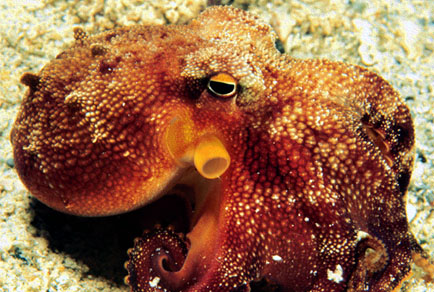Abstract
Amphioctopus arenicola is a new species of octopus that lives in shallow coastal waters off the Hawai’ian Islands. The species is medium sized (ML to 100 mm); sucker counts range from 160–210 on normal arms and approximately 100 on hectocotylized arms of males; gill counts range from 9–11 lamellae per demibranch; copulatory organs are small, 2.5–3.5% of hectocotylized arm lengths; eggs are small (2–3 mm); and hatchlings planktonic. Amphioctopus arenicola shares a number of characteristics with several non-ocellate tropical Pacific members of the genus, namely, A. aegina (Gray, 1849), A. kagoshimensis (Ortman, 1888), and A. marginatus (Taki, 1964). It can be distinguished from these species based on body size, sucker counts, configuration of the male terminal organ, spermatophore size and number, and geographic distribution. Amphioctopus arenicola typically lives on sandy substrates in depths ranging from 1–80 m.

